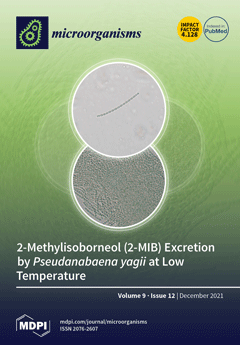The biofilm associated protein (Bap) is recognised as the essential component for biofilm formation in
Staphylococcus aureus V329 and has been predicted as important for other species as well. Although Bap orthologs are also present in most
S. xylosus strains, their contribution to
[...] Read more.
The biofilm associated protein (Bap) is recognised as the essential component for biofilm formation in
Staphylococcus aureus V329 and has been predicted as important for other species as well. Although Bap orthologs are also present in most
S. xylosus strains, their contribution to biofilm formation has not yet been demonstrated. In this study, different experimental approaches were used to elucidate the effect of Bap on biofilm formation in
S. xylosus and the motif structure of two biofilm-forming
S. xylosus strains TMW 2.1023 and TMW 2.1523 was compared to Bap of
S. aureus V329. We found that despite an identical structural arrangement into four regions, Bap from
S. xylosus differs in key factors to Bap of
S. aureus, i.e., isoelectric point of aggregation prone Region B, protein homology and type of repeats. Disruption of
bap had no effect on aggregation behavior of selected
S. xylosus strains and biofilm formation was unaffected (TMW 2.1023) or at best slightly reduced under neutral conditions (TMW 2.1523). Further, we could not observe any typical characteristics of a
S. aureus Bap-positive phenotype such as functional impairment by calcium addition and rough colony morphology on congo red agar (CRA). A dominating role of Bap in cell aggregation and biofilm formation as reported mainly for
S. aureus V329 was not observed. In contrast, this work demonstrates that functions of
S. aureus Bap cannot easily be extrapolated to
S. xylosus Bap, which appears as non-essential for biofilm formation in this species. We therefore suggest that biofilm formation in
S. xylosus follows different and multifactorial mechanisms.
Full article






